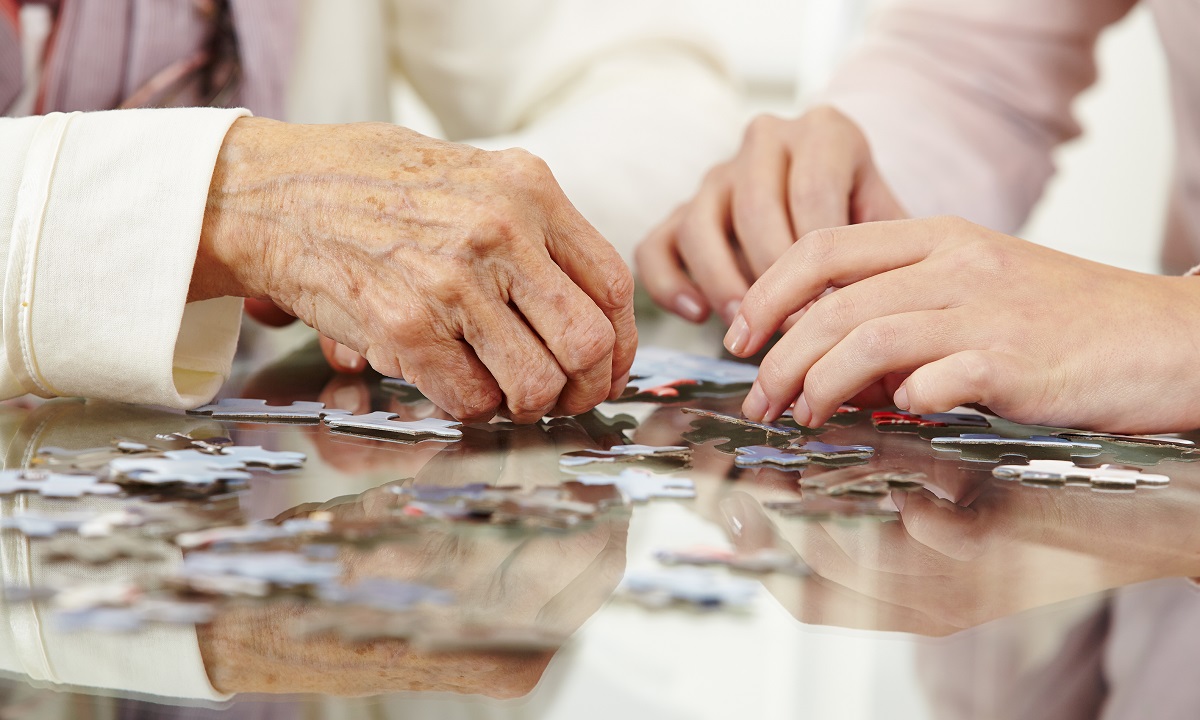There are approximately 1 in 30 people in the UK living with sight loss, this increases to 1 in 5 people aged 75 and over and 1 in 2 people over 90. So, whatever the age of someone with dementia, there is a high possibility that they might also have a sight condition or at least deteriorating eyesight.
Many types of dementia can have a visual impact. For example, Alzheimer’s can cause difficulties for people perceiving things in 3D, vascular dementia can cause visual mistakes and misperceptions (for example seeing a rug as a pond) and dementia with Lewy bodies can cause visual hallucinations.
There are also a huge range of sight conditions which have different implications for people’s sight. For example, the effects of cataracts can be exacerbated by glare, meaning that someone might find a brightly lit room uncomfortable or be able to see less on a very sunny day making them more hesitant when outside.
VIDA Training is run by business partners Vicky and Dave. They have more than 35 years combined experience in the disability field, and experience of family members living with dementia. We run a variety of training courses both for organisations and individuals including courses for family and friends. We also write a weekly blog. For more information about us and our training services go to www.vidatraining.co.uk.
Add to this the fact that the brain is constantly trying to make sense of the images it sees – the classic quote of ‘We see with our brains not with our eyes’ (Paul Bach-y-Rita) – means other factors can also be called into play. For example, Dave, who has a sight condition called Retinitis Pigmentosa, was delivering training at quite a posh venue and was surprised to notice a huge clock on a wall at the far end of the room, which had stationery hands. He commented to a colleague ‘you’d think they could afford a working clock.’ She then described to him the big piece of artwork on the wall: a picture of a door ajar with light shining through it – creating the shape Dave had seen of two hands of a clock… Dave’s brain had worked overtime to make sense of the image that he saw.
So, if someone with dementia is finding a task difficult, is that because of their dementia, a sight condition, or a mixture of both? Apart from obviously recommending people seek medical advice and support regarding any concerns, it can be very difficult to determine what is making a task difficult. We don’t pretend to have any quick fix solutions, but through our training, we are able to share a great deal of knowledge, experiences and personal anecdotes that might offer more options to consider.
Some are quick wins whilst others may require more consideration or some training.
We provide a few ideas and examples here…
Environment
A few simple changes might make all the difference – this could be as simple as improving or altering the lighting or having horizontal blinds on the windows to stop glare. Or it might mean removing a rug or mirror to avoid misinterpretation.
Communication
On our training we undertake some exercises to highlight the importance of communication, but the main message we share is to ensure that your communication is appropriate for the person you are talking to. Use terms the person will be familiar with and try to be consistent – (i.e. don’t refer to the GP in one conversation and then doctor/the surgery/the practice at other times). Also, if talking to someone with a vision impairment, remember to explain visual references, so rather than describing the location of something by saying ‘it’s just over there’, you might say ‘it’s just to your right.’ or use reference items such as saying, ‘it’s just to the right of the microwave’. For people with dementia, you may need to show the person or guide them to it, but always providing an explanation about what you are doing.
Guiding
There are correct techniques for guiding someone with a vision impairment. These specific techniques enable safe and respectful guiding of people with the key being that you are guiding rather than pulling or pushing. This correct technique needs to be demonstrated and practised in order to be used correctly.
Consistency
As we mentioned in communication, consistency can be really important. It also applies to layouts and everyday items (such as toothpaste tubes, shampoo bottles etc.). Where possible, avoiding changes is best, but where changes are required (or unavoidable) ensure they are well thought through and agreed/discussed/explained.
And the one we can’t stress enough…
Time!!
Allow plenty of it. This applies to allowing extra time to undertake a task or a journey but also to explaining things properly and communicating effectively.
SHARE
Explore more




